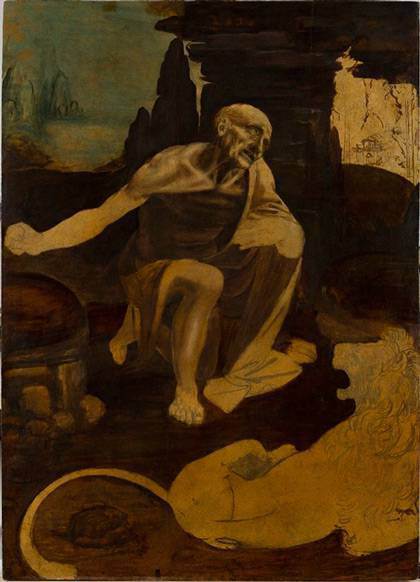
Leonardo da Vinci (Italian, 1452–1519). Saint Jerome Praying in the Wilderness, begun ca. 1483. Oil on wood, 40.5 x 29 1/4 in. (103 x 74 cm). Vatican City, Musei Vaticani. Photo © Governatorate of the Vatican City State – Vatican Museums. All rights reserved.
Leonardo da Vinci’s ‘Saint Jerome’ at the Met To commemorate the 500th anniversary of the death of Leonardo da Vinci (1452–1519), the Metropolitan Museum of Art displays the artist’s painting ‘Saint Jerome Praying in the Wilderness’ (begun ca. 1483). July 15 – October 6, 2019]]>
Source: The Metropolitan Museum of Art
Leonardo da Vinci is the prototypical universal genius of the Renaissance. He was trained in Florence as a painter, sculptor, and thinker in the innovative workshop of Andrea del Verrocchio (1435–1488). Leonardo was principally active in Italy—in Florence, Milan, and Rome—and France. He began working on Saint Jerome Praying in the Wilderness” in Milan around 1483, but kept the painting with him until his death in Amboise, France, on May 2, 1519. The general circumstances of Saint Jerome’s production are unknown, as are the reasons that Leonardo continued to rework this painting into his mature years without ever finishing it.
The painting represents Jerome (A.D. 347–420), a major saint and theologian of the Christian Church. The scene is based on the story of his later life, which he spent as a hermit in the desert, according to the 13th-century Golden Legend. The penitent Jerome—aged, gaunt, and nearly toothless—kneels in prayerful meditation before a cave in a rocky landscape. Reclining before Jerome is the tame lion, his companion in the desert and a central figure in the story of Jerome’s life. The saint’s face and gestures convey Leonardo’s theories on human physiognomy and the psychology of expression.
In its unfinished state, the painting shows us that Leonardo did not proceed in a wholly disciplined way. He was particularly interested in creating a detailed, anatomically correct under drawing for the saint’s ascetic body. The elegant silhouette of the reclining lion seems now especially powerful, because there is almost no modeling beyond the outlines. A close examination of the paint surface reveals the presence of Leonardo’s fingerprints, especially in the upper-left portion of the composition. Leonardo used his fingers to distribute the pigments and create a soft-focus effect in the sky and landscape.
Related content
Landmark exhibition of Leonardo Da Vinci opens at the National Gallery of London (exhibition, 2011-2012)
Follow us on:


